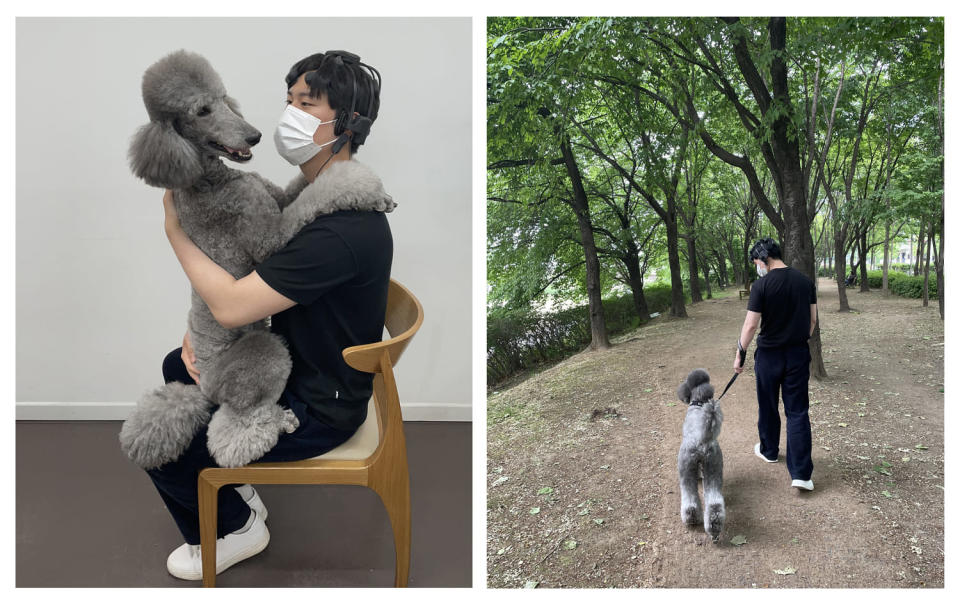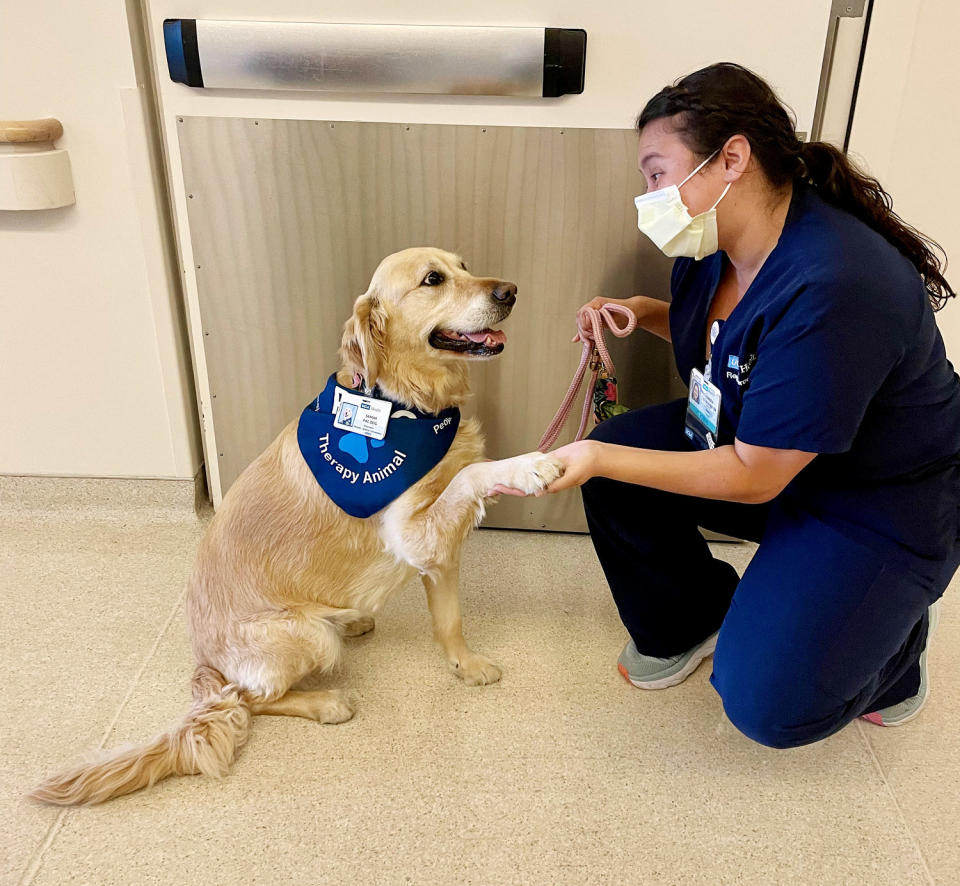Numerous studies investigating the bond between humans and dogs have found that canine companions can improve people’s moods, lower blood pressure, and lower levels of the stress hormone cortisol. Just looking at dogs’ eyes can even increase levels of oxytocin, a hormone associated with feelings of love and trust.
But few studies in the past have pinpointed exactly what happens in the brains of people who interact with a furry friend.
A study published Wednesday did exactly that: Researchers in South Korea fitted 30 adults with headphones with electrodes, then measured changes in their brain waves as they interacted with a poodle named Aro. The results showed that walking the dog made participants feel more relaxed, while brushing and playing with it increased concentration, providing both of these effects.
“Previous studies on the potential benefits of animal interactions often took a holistic approach, comparing people’s moods or hormone levels before and after spending time with a dog,” said study author Onyoo Yoo, a researcher at Konkuk University in South Korea. an email.
“An important finding is that participating in certain activities with dogs can increase specific brain activity,” Yoo added.
For the study, published in the journal PLOS ONE, Yoo’s team had participants engage in eight activities for three minutes each: meeting, playing, feeding, massaging, grooming, taking photos, cuddling and walking 4-year-old Aro.

Participants wore headphones that detected brain waves during the activities and filled out surveys about how they felt emotionally after each activity.
The researchers found that participants’ alpha brain waves, which indicate stability and relaxation, were strengthened when they played with Aro using squeaky toys and took him for walks on the park path. These results showed that people experienced an increased state of rest and relaxation.
Beta brain waves, which are associated with attention and concentration, became stronger when participants played with Aro, brushed him, or gave him a gentle massage; This is a sign that people’s concentration has increased without an increase in stress.
After all eight activities, participants reported feeling less stressed, tired, and depressed.
According to surveys, massaging Aro, giving him treats, and hugging him especially improve people’s mood. Participants also reported feeling comfortable walking on Aro and relaxing when massaging him.
“This study showed that certain dog activities can facilitate increased brain activity, stimulating stronger relaxation, emotional stability, attention, concentration and creativity,” Yoo said. said. “Additionally, interactions with dogs can reduce stress and induce positive emotional responses.”
Some past research has suggested that dogs may help relieve symptoms of depression or post-traumatic stress disorder, but it remains unclear how effective this intervention might be.
A 2022 study found that veterans and first responders with service dogs experienced fewer PTSD symptoms than those without service dogs, but that having a dog as a pet was less impactful.
Similarly, a 2020 clinical study found that service dogs were slightly better at improving PTSD symptoms among veterans compared to emotional support dogs that were not trained to perform tasks such as turning on lights or retrieving objects. However, both dog breeds improved PTSD symptoms to some extent.


Research also suggests that for this type of “pet therapy” to be beneficial, people must first love animals.
“I was actually traumatized by a dog at a very young age. I never really warmed up to them, so I’m not sure I’ll necessarily find the same comfort level,” said Kathryn Magruder, professor of psychiatry at the Medical University of South Carolina and author of the 2020 experiment.
Jennifer Dobkin directs an animal therapy program for medical patients and staff called the UCLA Human-Animal Connection and said she sees how interacting with dogs helps people concentrate and relax.
“If there’s a staff member who’s stressed and having a bad day, you can physically see their posture relax. They smile. They tell us things like, ‘You have no idea how much I need this,'” she said. .
Dobkin said he recently brought his own dog, Toto, a terrier mix, to visit a family whose father was dying. Amid the stress and sadness, the family was able to remove themselves from that headspace and “focus on something that required absolutely nothing from them: petting a dog,” she said.
Children at Stuart House, a center in Santa Monica, Calif., that provides medical treatment and forensic services to sexually abused youth, also chose to pet a Golden Retriever/Labrador mix named Norse when speaking with investigators, Dobkin said.
“Our dogs are called into these types of situations to help our children cope by talking about a really stressful situation that has happened to them,” she said. “I think it helps them concentrate. It just provides a sense of comfort.”
This article first appeared on NBCNews.com.